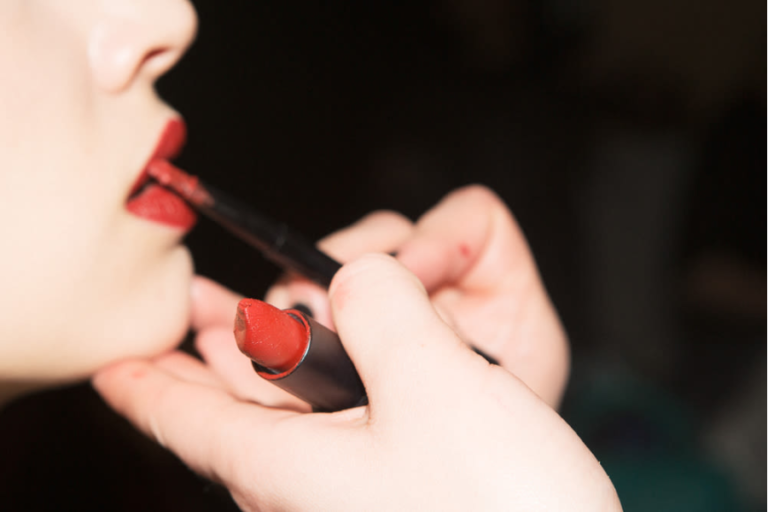Swarovski’s Journey: A Century of Craftsmanship and Crystal Innovation And More Explained
More than a century ago, Swarovski’s stunning crystals brought them fame. These crystals have given jewelry, clothes, and home décor a hint of elegance and beauty. The brilliance and delicacy of Swarovski crystals are unmatched when they adorn homes or the Hollywood red carpet.Beneath the sparkling exterior, though, is a tale of limitless imagination, unshakable talent dedication, and a never-ending quest for fresh and original ideas for works of art made of crystal.
This essay will explore the interesting history of Swarovski, analyze the brand’s notable influence on fashion and design, and emphasize the inventiveness and accuracy that define its products. We’ll also explore how Swarovski has changed its product lineup over time while still holding the top spot in the luxury market.
The Initiation of Magnitude
Daniel Swarovski wanted to provide “a diamond for everyone,” meaning that anybody could obtain crystals. With his introduction of hand-cutting techniques, a new era in crystal artistry was initiated. This creative strategy transformed the crystal-shaping process and served as the foundation for the business’s long-term success.
Opening Up New Paths: Innovation and Diverseness
Throughout the 20th century, Swarovski’s product line expanded beyond apparel and jewelry. The company unveiled two of its subsidiaries, Tyrolit, which produced industrial cutting tools, and Swarovski Optik, which produced high-end optical instruments, to showcase its technological prowess and agility.This invention demonstrates Swarovski’s versatility in inventiveness.
Integrating Art and Culture
With a strong link to the arts, Swarovski has become a key component of both fashion and film. Hollywood movies and Broadway plays’ sets and costumes have benefited from the glitz and refinement that its crystals have added. The business has also worked with well-known brands and designers like Alexander McQueen and Christian Dior, cementeding its status as a beloved icon in the world of luxury fashion.
Ecological Balance and Business Ethics
Prioritizing sustainability, Swarovski has put a lot of effort into reducing its environmental impact in recent years. The business has embraced sustainable sourcing practices and energy-efficient manufacturing. In addition to funding numerous charity projects, Swarovski has demonstrated its commitment to CSR by encouraging diversity and inclusivity among its employees.
Difficulties and Debates
Even with its distinguished history, Swarovski has generated some criticism. Due to the involvement of several family members who at the time supported the Nazi dictatorship, the company came under investigation. In order to make sure that its present business procedures are in line with its basic values of respect and honesty, Swarovski has recently made steps to confront this tough past.
Novelties and Upcoming Paths
Giovanna Battaglia Engelbert, the company’s artistic director, leads Swarovski in pushing the limits of its product ranges and design philosophies.The brand’s past provided inspiration for its most recent collections, which updated classic looks with a modern twist. This blend of traditional craftsmanship and current style pays homage to Swarovski’s rich history while also appealing to today’s buyers seeking out distinctive and expressive fashion pieces.
Facts and Summary: “Swarovski”
Summary:
Swarovski has become a global symbol of luxury and elegance, renowned for its exquisite crystals that have adorned jewelry, fashion, and home décor for over a century. The company’s journey is one of creativity, craftsmanship, and innovation, beginning with Daniel Swarovski’s vision to make “a diamond for everyone” by introducing hand-cutting techniques that revolutionized crystal artistry.
Throughout the 20th century, Swarovski expanded its reach beyond jewelry, venturing into optical instruments and industrial tools, showcasing its versatility. The brand has also played a significant role in the arts, collaborating with high-profile designers and contributing to the glamour of Hollywood and Broadway.
In recent years, Swarovski has prioritized sustainability and corporate social responsibility, making strides to reduce its environmental impact and promote diversity within its workforce. Despite its illustrious history, the company has faced challenges, including addressing controversial ties to the Nazi regime. Today, under the artistic direction of Giovanna Battaglia Engelbert, Swarovski continues to innovate, blending traditional craftsmanship with modern aesthetics to appeal to contemporary consumers.
Key Facts:
- Founded by Daniel Swarovski: The company was established in 1895, with a vision to create affordable luxury by making high-quality crystals accessible to everyone.
- Revolutionary Hand-Cutting Techniques: Daniel Swarovski introduced hand-cutting techniques that set a new standard in crystal artistry and laid the foundation for the company’s success.
- Expansion Beyond Jewelry: In the 20th century, Swarovski expanded into optical instruments (Swarovski Optik) and industrial cutting tools (Tyrolit), demonstrating its technological expertise and innovation.
- Cultural Impact: Swarovski has been deeply involved in the arts, contributing to the glamour of Hollywood films and Broadway productions, and collaborating with top designers like Christian Dior and Alexander McQueen.
- Sustainability Efforts: In recent years, Swarovski has focused on sustainability, adopting energy-efficient manufacturing processes and sustainable sourcing practices. The company is also committed to corporate social responsibility, promoting diversity and inclusivity.
- Controversial History: Swarovski faced scrutiny due to some family members’ ties to the Nazi regime during World War II. The company has since addressed this history and strives to uphold its values of respect and integrity.
- Current Innovations: Under the artistic direction of Giovanna Battaglia Engelbert, Swarovski continues to push the boundaries of design, reinterpreting archival designs with modern aesthetics.
FAQs About Swarovski
1. What is Swarovski known for?
- Swarovski is renowned for its high-quality crystals used in jewelry, fashion, and home décor. The brand is synonymous with luxury and elegance, admired globally for its craftsmanship.
2. Who founded Swarovski?
- Swarovski was founded by Daniel Swarovski in 1895, with a vision to create “a diamond for everyone” by making crystals accessible and affordable.
3. How did Swarovski revolutionize crystal cutting?
- Daniel Swarovski introduced hand-cutting techniques that transformed the way crystals were shaped, setting a new standard in crystal craftsmanship and laying the groundwork for the company’s success.
4. How has Swarovski expanded beyond jewelry?
- Besides jewelry, Swarovski has expanded into producing high-end optical instruments through Swarovski Optik and industrial cutting tools under the Tyrolit brand, showcasing its versatility and technical expertise.
5. What role does Swarovski play in the arts?
- Swarovski has been deeply involved in the arts, contributing to the elegance of Hollywood films and Broadway shows, and collaborating with top designers like Christian Dior and Alexander McQueen.
6. What sustainability efforts has Swarovski made?
- Swarovski has prioritized sustainability by adopting energy-efficient manufacturing processes, sustainable sourcing practices, and promoting corporate social responsibility through diversity and inclusivity initiatives.
7. Has Swarovski faced any controversies?
- Yes, Swarovski has faced criticism due to the involvement of some family members with the Nazi regime during World War II. The company has since taken steps to address this part of its history and ensure its values align with respect and integrity.
8. Who is Giovanna Battaglia Engelbert?
- Giovanna Battaglia Engelbert is the current artistic director of Swarovski, leading the brand in innovating its design approach by blending traditional craftsmanship with modern aesthetics.
9. What is Swarovski’s approach to design under Giovanna Battaglia Engelbert?
- Under Giovanna Battaglia Engelbert’s leadership, Swarovski’s recent collections have reinterpreted archival designs, combining traditional craftsmanship with contemporary style to appeal to modern consumers.
10. How has Swarovski maintained its status in the luxury market?
- Swarovski has maintained its status in the luxury market by continually innovating its product offerings, embracing sustainability, and staying deeply connected to the world of fashion and the arts.
Explore captivating stories and insightful profiles of notable individuals at MediumPeople.com.






